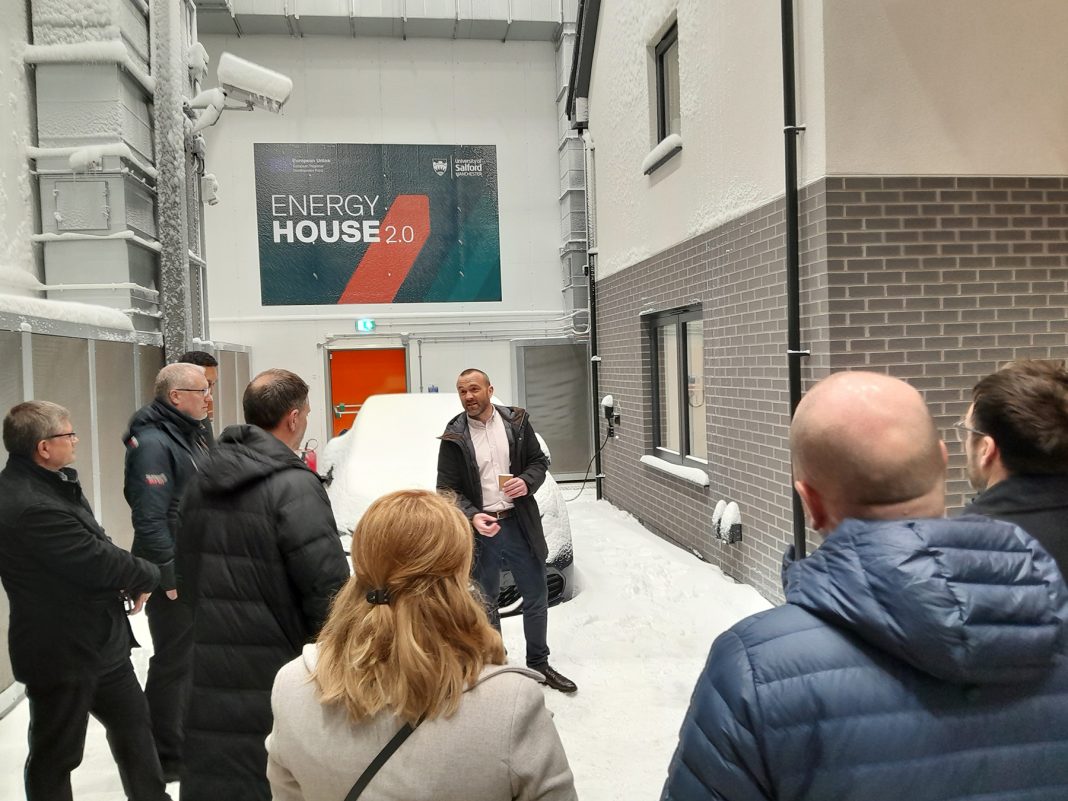The role of glazing in the road to Net Zero was highlighted at the launch of a £16million research facility built to test windows and other energy saving features in the harshest weather conditions.
Press and other guests at a special preview of Energy House 2.0 this week saw how two full-size three-bedroom detached houses have been built inside a climate-controlled chamber at the University of Salford, where wind, rain and snow at temperatures ranging from -20 to +40C.
Over a next of nine months, the houses built by Saint-Gobain, Barratt Developments and Bellway Homes will undergo rigorous whole-building testing including thermal performance, energy efficiency, running costs and comfort, as well as their ability to cope with the extreme climates.
Mike Butterick, marketing director at Saint-Gobain Glass said: “This ground-breaking laboratory will play a key role in accelerating progress towards large volume, low carbon and net zero houses that are sustainable, comfortable and will cost homeowners far less to heat and run at a time when we’re in the midst of an energy crisis.
“Saint-Gobain is leading the way by making a significant investment in this partnership with Barratt Homes to deliver this project, which also includes products from other Saint-Gobain group companies. This cutting-edge research will make a real difference to people’s lives and will result in a step-change in the way homes are built and used in the future.”
He explained that 1.2 Uw double-glazed, casement windows have been fitted into one of the houses. These will then be converted to 0.8 Uw triple-glazed casement windows by replacing the insulated glass units.
The double and triple glazed windows feature Planitherm One T low-e coated glass from Saint-Gobain Glass and were manufactured by Regency Glass, using the Eurocell Modus Window System fabricated by Nova Group and installed by New View.
Oliver Novakovic, technical & innovation director at Barratt Developments, said: “With the energy efficiency of the external façades becoming ever more important, as we move to the 2025 Future Homes Standard, windows will play a critical role in meeting the regulations and delivering comfortable environments for our customers.”
Energy House 2.0 is a £16 million project part-funded by the European Regional Development Fund.












